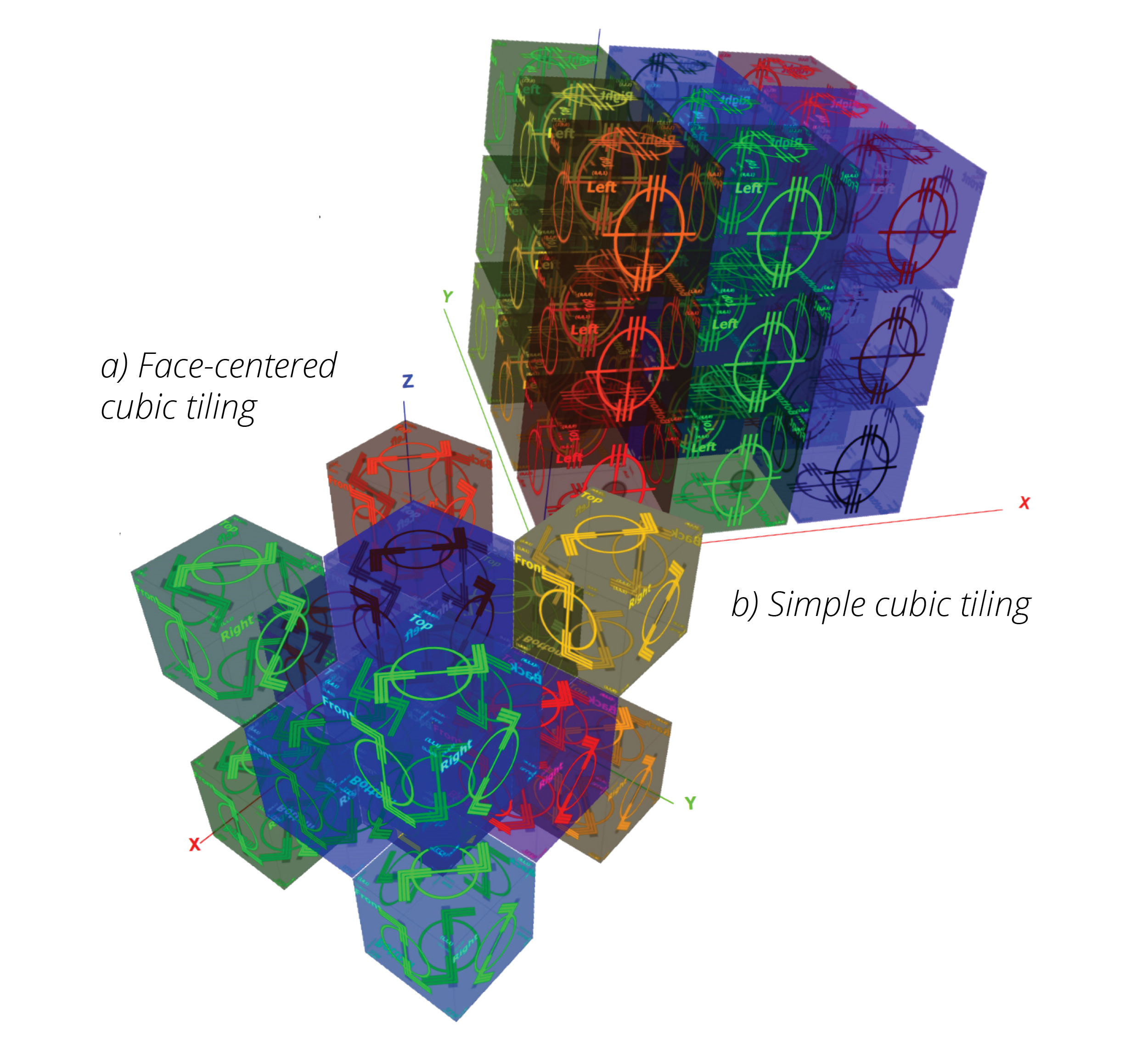Metamaterials are artificial optical structures that allow control of light in ways not found in, or offered by, naturally occurring materials. Sandia’s Multiscale Inverse Rapid Group-theory for Engineered-metamaterials (MIRaGE) software, which won an R&D100 award in 2019, allows researchers to deterministically design and produce metamaterials with unique characteristics. MIRaGE also provides powerful autonomous optimization techniques for real-world performance in a rigorous, robust, and accurate manner.
Metamaterials can be better understood by considering the example of elemental carbon. Both diamonds and graphite are made of this element, but the difference is that one has carbon atoms arranged on a staggered face-centered lattice and the other in a hexagonal lattice. Diamonds are optically transparent and one of the hardest known materials known, while graphite is pliable and opaque. The critical feature is the 3D geometric arrangement. Using the same rationale, through the metamaterial approach, it’s possible to engineer graded properties between diamonds and graphite. A third material is not needed for mixing and tuning. Instead by geometrically assembling artificial carbon structures in unique 3D arrangements, semi-transparency can be realized. Scale is important, as this is not an atomistic approach.
Of particular interest to researchers are metamaterials with unusual electromagnetic behaviors appearing as effective optical properties. Since its inception, the field of optical metamaterials has lagged in its attempts to achieve full potential because of its dependence on trial and error. Prior to MIRaGE, only a handful of the eighteen possible electromagnetic classes (tensors) of behaviors had been realized – an enormous number of possibilities had to be navigated by intuition and trial and error, no matter the optimization techniques. MIRaGE overcomes challenges in design, while ensuring the desired qualitative behavior.

Metamaterials are designed on a length scale ~10-times smaller than the wavelength of interest. Unlike natural materials, the incoming wave does not see the micro-structure of the metamaterial, but instead an aggregate-effective behavior. When designing metamaterials, resonances are engineered and tuned through the 3D geometrical arrangement, shape, and topology. These act to give an effective behavior that is not a simple average of the underlaying materials. With metamaterials, the outcome can be designed to yield effective values that are larger or smaller than that of the individual components and can be tuned to a spectrum of values by changing the sub-structure.
One of the goals of MIRaGE is to create optically invisible metamaterials by making the refractive index (n) of a solid material in an optical band of interest match that of air/vacuum (n=1), or alternatively, make a flat surface focus and concentrate light like a curved lens. This can be done by engineering n< 0. Since there are no transparent natural materials with a negative refractive index (n
Unique to MIRaGE is its inverse approach, allowing a user to start with a desired optical outcome, and through a series of sequential steps guided by the tool, get the result as an optimized metamaterial. The inverse design software relates desired properties to groups of molecular symmetries that possess those properties. By using those symmetries to predict behavior, a metamaterial can be designed that is guaranteed to exhibit the desired properties (such as semi-transparency). MIRaGE allows the researcher to explore various configurations, simulate the system, and validate the behavior. It enables researchers to optimize the design by tuning it precisely to the requirements without guesswork. MIRaGE retains its speed across a variety of computing platforms and can provide support at various levels of design proficiency.
Another unusual feature of MIRaGE is its Group-theory foundation and its ability to simulate and tile heterogeneous unit metamaterial cells into various configurations. This allows the user to combine different metamaterial properties to achieve a new functionality, hierarchical functionality, or even directional functionality where metamaterials are added together to yield different behaviors in different directions. The user can take full advantage of the 3D space, creating compact and agile multi-functional designs. Traditional electromagnetic simulation tools usually limit simulation to a single repeating unit cell (to reduce the computational overhead and time needed to produce an outcome), but with MIRaGE’s powerful computational engine, as many as eight tiled heterogeneous (non-identical) unit cells can be simulated on a standard laptop using MIRaGE-Lite. This number can be greatly expanded if deployed on a sizable workstation to hundreds or thousands of heterogeneously tiled unit cells using MIRaGE-Elite. “Lite” and “Elite” are MIRaGE computational modes that use frequency domain and time domain solvers respectively. The former is geared to rapid prototyping, and the latter towards exascale-level computations.
Categorization of designs based on symmetry groups has generated a card catalog of metamaterial building blocks. Modules can now be arbitrarily combined, and performance predicted by simply referring to a lookup table correlating each building block to its expected behavior. The library function draws on an extensive and expanding experimental base to suggest viable starting points for the design.
MIRaGE’s metamaterials are used in a variety of specialized optics, such as advanced lasers, cloaking materials, and thin, flat lenses. The MIRaGE approach represents a more computationally efficient technique for metamaterial design than other contemporary options because it delivers the objective behavior faster, or more accurately, or both.